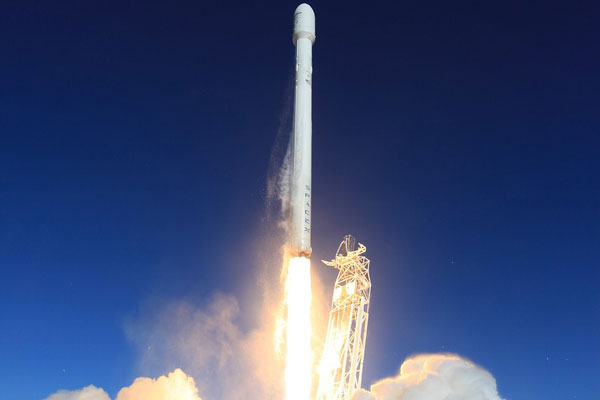NASA launches two more satellites into space, completing TROPICS mission

[Rocket launching, Credit to Pixabay]
On Friday, May 26 (EDT Thursday, May 25), the final pair of NASA’s TROPICS (Time-Resolved Observations of Precipitation structure and storm Intensity with a Constellation of Smallsats) satellites were launched from Mahiainto orbit, completing the “constellation”.
This launch followed a previous successful launch of two satellites that took place a year ago.
NASA’s TROPICS mission is a “constellation” or network of satellites, individually known as 3U CubeSats.
Through this mission, NASA will be able to study tropical cyclones and improve the forecasting for hurricanes and typhoons.
They are specifically designed to observe tropical cyclones in a unique, inclined low Earth orbit over Earth’s tropics.
This orbit then allows them to travel over any given storm about once an hour.
This is a major improvement and a major step up compared to the current satellites observing storms at once every 6 hours.
A singular 3U Cubesat is only about the size of a loaf of bread and weighs around 16 pounds or 7 kilograms.
Each TROPICS CubeSat has a spinning microwave with miniature microwave sensors.
These individual microwave sensors will be able to pick up frequencies that can monitor water vapor in Earth’s atmosphere.
They are powered by tiny solar panels at their sides and are estimated to last around 3 years.
First created in early 2020, TROPICS is one of NASA’s Earth venture-instrument missions.
According to NASA, this means that they are “science-driven, competitively selected, low-cost endeavors that provide opportunity … better to understand the current state of the Earth system.”
The TROPICS Pathfinder satellite, a proof-of-concept CubeSat that launched in June of 202, captured images of multiple cyclones while in orbit.
However, NASA’s attempt at launching the first few Cubstats would prove to be more difficult than expected.
The first launch was delayed due to bad weather conditions, and on June 12th, 2022, the Astra Rocket 3.3 carrying the first two CubeSats was lost in orbit, along with its payload.
The next launch was 3 months later after Nasa had waited to upgrade the rockets to Astra Rocket 4 from 3.3.
However, this time, the CubeSats were successfully put in orbit on May 8th of 2022.
Although there would actually be five TROPICS satellites in orbit, the pathfinder satellite launched in 2021 is in a polar orbit- meaning that it is not in the same orbital plane as the other four that will be launched in the coming weeks.
If there had been another mission failure for TROPICS, the remaining satellites would still have been used for probing cyclonic storms, though the storm revisit rate would not be within the hourly target for the project.
The twin TROPICS launches hold a special meaning for NASA’s team, as Cyclone Gabrielle impacted nearby areas in New Zealand early this year.
The storm killed at least 11 people and was the costliest cyclone in the Southern Hemisphere to date, causing at least $8.4 billion US dollars in damage.
Rocket Lab and NASA assisted in local disaster relief efforts.
Fortunately, the launch site at Mahia was undamaged by the storm.
Although this mission may not be ground-breaking success, it will undoubtedly bring great improvement to the safety of citizens.

- Ian J. Kim / Grade 8
- Asia Pacific International School

![THE HERALD STUDENT REPORTERS [US]](/assets/images/logo_student_us.png)
![THE HERALD STUDENT REPORTERS [Canada]](/assets/images/logo_student_ca.png)
